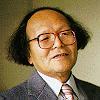- JST Home
- /
- Strategic Basic Research Programs
- /
 ERATO
ERATO- /
- Research Area/Projects/
- Completed/
- MIZUNO Bioholonics
MIZUNO Bioholonics

Research Director: Dr. Den’ichi Mizuno
(Professor, Faculty of Pharmaceutical Science, Teikyo University)
Research Term: 1982-1987
Though science and technology have created elements and systems with fixed functions, such as ICs and computers, the cooperative interactions between individual elements – holons – making up such systems as biological organisms have great need to be explained. This project has shown special cooperative aspects of this type of interaction to be maintained among molecules, cells, tissues and organs for energy conversion, information processing and immunology.
Research Results
Macrophage priming: It was shown that human macrophages can be primed by various agents such as vaccines and other biological response modifiers (BRMs) involving lentinan and gamma-interferon so that they can be triggered by agents such as OK432 to produce the tumor necrosis factor (TNF).
Endogenous TNF production: An endogenous production of TNF in mice was demonstrated by a combined use of commercial drugs, such as gamma-IFN and OK-432. This procedure was then shifted to cancer patients in order to confirm their endogenous production of TNF.
A new TNF: A new TNF (TNF-S) was isolated from the supernatant of THP-1 culture cells. The antitumor effect on TNF-S has been remarkable in clinical trials.
Atherosclerosis and macrophges: In order to activate macrophages in atherosclerotic lesions, monoclonal antibodies against lipid laden cells and against extracellular matrix deposited with lipids in Watanabe heritable hyperlipidemic rabbits were developed.
Elimination of lipid deposits using macrophages: Novel monoclonal antibodies against human atherosclerotic lesions (256C) were shown to be useful for activating macrophages in order to accelerate the elimination of lipid deposits.
Self-creation of operational information: The generally understood mechanism for the self-creation of operational information was attacked and clarified. In this process, neuronal holons were studied based on neuronal network dynamics in the brain. A holon computer, holovision, was designed and constructed for pattern recognition based on the clarified mechanism.
Autonomic controls of chemo-mechanical energy conversions: Autonomic controls of chemo-mechanical energy conversions in some biological motions were also studied. It was shown that myosin molecules in muscle as well as dynein molecules in flagellum work cooperatively as holons. Motors with an automatic control, named biomotors, were created by utilizing actin and myosin molecules isolated from rabbit skeletal muscle.

Fig 1: Oil Red Odye stains in red both interrcellular matrix and foam cells. These lesions correspond to cholesterol ester accumulated in ath eromatous aorta.

Fig 2: The multiprocessor system which simulates a holonic computer. The left side part:16 processing elements. The right side part: control processor.

Fig 3: Monoclonal antibody (212D) which was labelled with fluorescence recognizes intercellular matrix deposited with cholesterol ester in atheromatous aorta.














